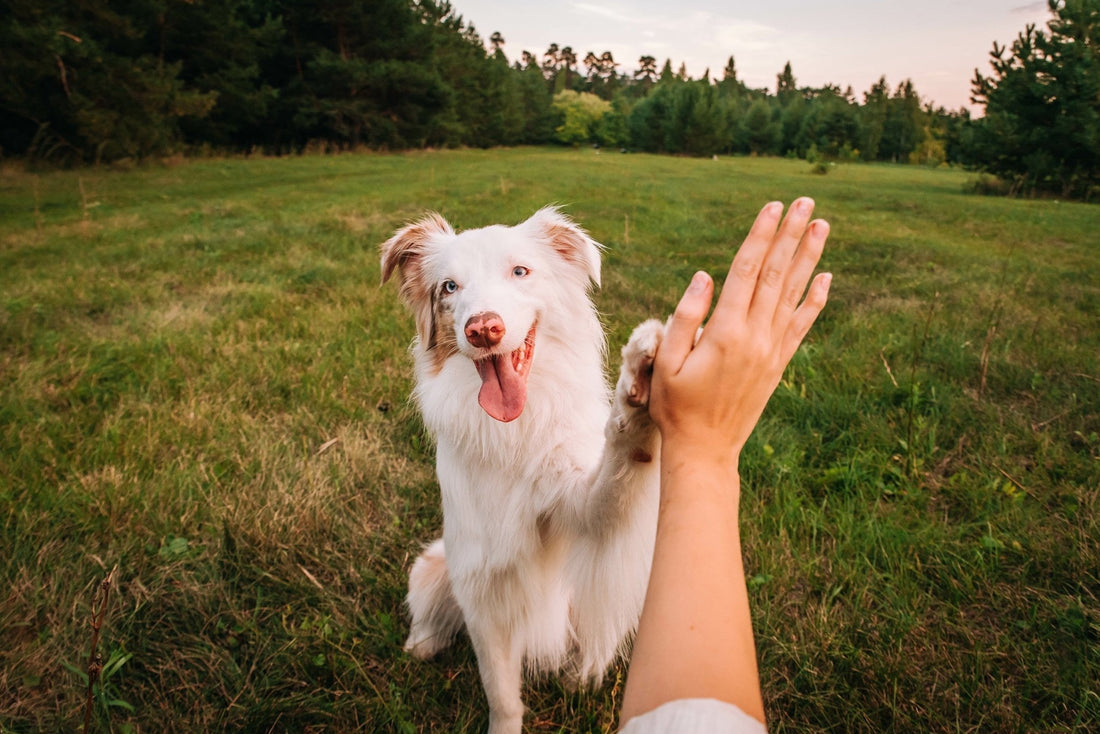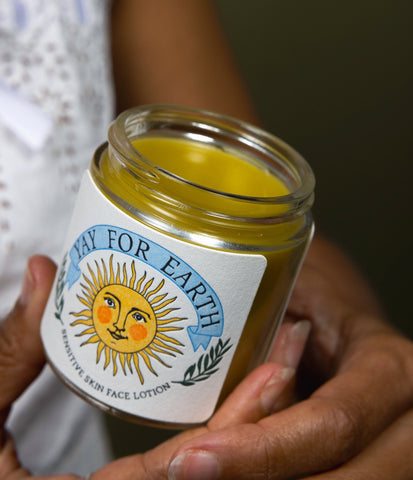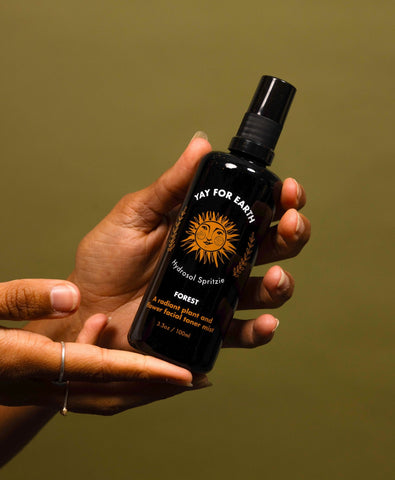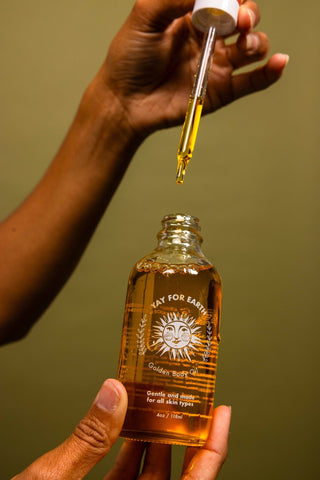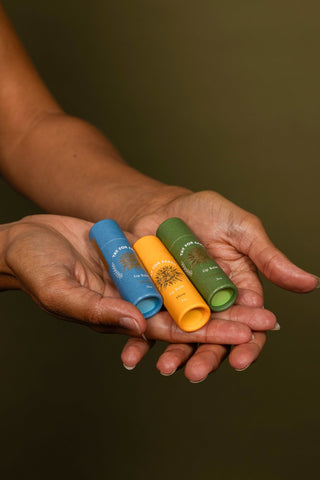Your beloved dog comes in from a winter walk, paws looking dry and uncomfortable from salt-covered sidewalks. Or perhaps you've noticed them scratching at a persistent dry patch that just won't seem to heal. As pet parents, we want to provide the same thoughtful, natural care for our furry family members that we've learned to appreciate for ourselves.
Just as many of us have discovered the benefits of natural skincare, our four-legged companions can also benefit from earth-given ingredients. Shea butter – the same nourishing treasure that's transforming human skincare – offers gentle, effective support for canine skin health too.
However, caring for our dogs' skin requires understanding their unique needs. Dogs aren't simply smaller versions of humans, and their skin has different sensitivities, absorption rates, and care requirements. They also have a natural tendency to groom themselves, which means anything we apply needs to be safe if ingested in small amounts.
This guide provides comprehensive information about using shea butter safely and effectively for dogs, from understanding the science behind why it works to practical application techniques that support healthy skin and comfortable paws. Because our dogs deserve the same thoughtful, natural care we give ourselves.
Understanding Shea Butter: Nature's Gift for Skin Health
Shea butter comes from the African shea tree (Vitellaria paradoxa), treasured for centuries by communities across West and Central Africa. The traditional process involves cracking, roasting, grinding, and kneading the nuts until they release their rich, butter-like oils.
What makes shea butter valuable for skin care lies in its natural composition: vitamins A and E, essential fatty acids, and compounds like cinnamic acid that provide anti-inflammatory properties. It's nature's comprehensive skin treatment in one gentle form.
The distinction between raw (unrefined) and processed shea butter is crucial. Raw shea butter retains beneficial compounds – vitamins, minerals, and healing properties. It maintains its characteristic ivory to golden color and subtle, nutty scent.
Processed shea butter has been treated with chemicals and high heat that remove therapeutic compounds. For canine care, raw shea butter provides the full spectrum of natural benefits that support healthy skin function.

The Science of Canine Skin and Shea Butter Benefits
Canine Skin Structure and Challenges
Dog skin shares fundamental similarities with human skin – the same basic three-layer structure. However, canine skin is more permeable, meaning topical applications absorb more readily. This makes the purity and quality of what we apply important.
Dogs face environmental challenges that affect skin health: seasonal weather changes, indoor heating and cooling, various walking surfaces, and exposure to allergens and irritants.
How Shea Butter Supports Skin Function
Shea butter works through several mechanisms. Essential fatty acids act as building blocks for healthy skin cells, helping repair and strengthen the skin barrier that keeps moisture in and irritants out.
Vitamins A and E function as antioxidants, protecting skin cells from environmental damage and supporting natural healing. These nutrients work gradually, supporting the skin's repair mechanisms.
Natural Anti-Inflammatory Properties
Shea butter's anti-inflammatory action comes from compounds like cinnamic acid that help reduce inflammation and soothe irritated skin. This gentle effect provides comfort for dogs dealing with dry, itchy, or mildly irritated skin.
Unlike synthetic agents, shea butter's natural compounds work harmoniously with existing skin processes, providing relief without disrupting normal function.
Moisture Balance and pH Compatibility
Shea butter provides hydration on multiple levels. It penetrates skin layers to deliver moisture where needed, while forming a breathable protective barrier that prevents moisture loss.
Dog skin typically has a pH range of 5.5-7.5, and shea butter's natural pH of around 5-7 makes it compatible with canine skin chemistry, working with your dog's natural processes.
SHOP THE BEST SHEA BUTTER FOR DOGS
Comprehensive Benefits for Canine Skin Health
Paw Pad Care and Protection
Dog paw pads endure daily stress from hot pavement, cold and salt, rough terrain during hikes. These pads can become dry, cracked, or damaged from environmental exposure.
Shea butter provides immediate relief and ongoing protection. Its moisturizing properties soften rough areas, while natural healing compounds support repair of minor cracks. The protective barrier helps shield paw pads during daily walks.
Regular application maintains paw pad flexibility and comfort, reducing painful cracks or injuries. For dogs spending significant time outdoors or in extreme weather, this preventive care makes a meaningful difference.
Dry Skin Relief and Weather Protection
Many dogs experience dry skin from seasonal changes, indoor heating, age-related changes, or genetics. Shea butter's deep moisturizing provides lasting relief unlike lighter moisturizers that evaporate quickly.
Applied before outdoor activities, shea butter acts as a natural barrier against wind, cold temperatures, UV exposure, and environmental pollutants. This protection is valuable during harsh weather periods.
Support for Minor Issues and Coat Health
While serious conditions require veterinary care, shea butter provides supportive care for minor irritations, small scratches, or mild dryness. Its anti-inflammatory and gentle antimicrobial properties support natural healing processes.
Healthy skin is the foundation of a healthy coat. When skin is properly moisturized and functioning optimally, it supports stronger, more lustrous hair growth. Regular shea butter use contributes to improved coat appearance.
Nose and Exposed Skin Care
Dogs' noses and exposed skin areas can become dry and uncomfortable, particularly in certain breeds or weather conditions. Shea butter provides gentle moisturizing for sensitive areas without risk if licked off.

Safe and Effective Application Guidelines
Selecting Quality Shea Butter
Choose pure, unrefined, organic shea butter without added fragrances or oils. The ingredient list should be simple – ideally just "organic shea butter." Look for products with natural golden to ivory color and mild, pleasant scent.
Patch Testing and Application Technique
Before applying to larger areas, conduct a patch test. Apply a tiny amount to a small skin area and observe for reactions over 24 hours. Most dogs tolerate pure shea butter well.
Begin with clean, dry skin. Take a small amount and warm it between your hands until soft and spreadable. Apply using gentle, circular motions. For paw pads, pay attention to cracks where dryness develops.
Target Areas and Timing
Focus on areas experiencing stress or showing dryness: paw pads and skin between toes, nose leather if dry, elbow calluses, and any areas showing dryness or irritation. For general maintenance, apply 2-3 times per week. During harsh weather, daily application may be beneficial.
Many owners find evening application works well, allowing time for absorption overnight. Winter weather often requires more frequent application due to cold air and salt exposure.
Important Safety Considerations and Contraindications
Tree Nut Sensitivity Awareness
Shea nuts are technically tree nuts, and while allergic reactions in dogs are uncommon, they can occur. Dogs with known sensitivities should be introduced to shea butter cautiously, with close monitoring for adverse reactions.
Signs of allergic reaction include hives, swelling (particularly around the face), difficulty breathing, excessive drooling, or sudden behavioral changes. If symptoms appear after application, remove the product immediately and contact your veterinarian.
When Veterinary Care is Needed
Shea butter is not appropriate for serious skin conditions requiring professional medical treatment. Deep wounds, infected areas, or severe skin conditions need veterinary evaluation and treatment.
Signs indicating the need for veterinary care include deep cuts, areas with discharge or strong odor, large areas of broken skin, skin conditions covering significant portions of your dog's body, or any situation where your dog seems systemically unwell.
Active Infection Concerns
If your dog has a bacterial or fungal skin infection, adding any topical product could potentially worsen the condition. Signs include strong, unpleasant odors, discharge, excessive warmth, significant swelling, or red, angry-looking skin.
These conditions require specific antimicrobial treatments that only veterinarians can prescribe. Using topical products during active infections may trap bacteria or create environments where infections worsen.
Monitoring for Adverse Reactions
Continue to monitor your dog's response to shea butter applications. Watch for increased redness or irritation, excessive licking or scratching at treated areas, changes in your dog's behavior or comfort level, or any worsening of existing skin conditions.
If you notice concerning changes, discontinue use and consult with your veterinarian for guidance.

From Human Skincare to Canine Care
While Yay for Earth's Sensitive Skin Face Lotion was originally formulated for human sensitive skin, many pet parents have discovered its gentle effectiveness for their dogs' paw care needs.
The four-ingredient formula—organic olive oil, local beeswax from beekeeper Beth, organic shea butter, and organic pomegranate seed oil—provides exactly what dry, stressed paw pads need without unnecessary additives. Each component serves a purpose: the shea butter delivers deep moisture and anti-inflammatory benefits, beeswax creates a protective barrier against harsh elements, olive oil provides antioxidant support, and pomegranate seed oil aids in skin regeneration.
What makes this lotion particularly suitable for dogs is what it doesn't contain: no artificial fragrances, no synthetic preservatives, no harsh chemicals, and no unnecessary fillers. Just pure, regeneratively sourced ingredients working together.
Pet parents report that a small amount (roughly pea-sized) goes a long way on paw pads, making the $32 investment last 2-3 months even with regular use. The concentrated formula absorbs well without leaving excessive residue, and the simple ingredient list means you know exactly what you're applying to your dog's skin.
Important note: While many customers have successfully used this product on their pets, always consult your veterinarian before using any human skincare product on your dog, especially if they have existing skin conditions or sensitivities.
SHOP THE BEST SHEA BUTTER FOR DOGS
Practical Wisdom for Long-Term Skin Health
Storage and Shelf Life Management
Pure shea butter maintains its beneficial properties for 12-24 months when stored properly in cool, dry conditions away from direct sunlight. Monitor for signs of spoilage including rancid odors, unusual color changes, or texture variations.
Use clean hands or utensils when handling shea butter to prevent contamination. Consider keeping smaller portions in separate containers for regular use while maintaining the main supply in optimal storage conditions.
Seasonal Care Adaptations
Your dog's skin needs will change with environmental conditions. Winter often requires more frequent application due to cold air, heating systems, and potential salt exposure. Summer may call for protective application before outdoor activities.
Pay attention to your dog's individual responses to seasonal changes and adjust your care routine accordingly. Some dogs need minimal intervention, while others benefit from consistent seasonal support.
Building Positive Associations and Individual Care
Make shea butter application a positive experience by associating it with calm, comfortable times. Use gentle handling, speak soothingly, and consider offering treats during application to create positive associations.
Every dog is unique in their skin care needs. Factors like age, breed, activity level, environment, and genetics all influence what kind of care will be most beneficial. Trust your observations and your dog's responses to guide your approach.
Integration with Overall Health Care
Skin health is connected to overall health, including nutrition, exercise, stress levels, and general wellness. While topical care with shea butter can provide significant benefits, it works best as part of a comprehensive approach to your dog's health and well-being.
Frequently Asked Questions
Is shea butter safe if my dog licks it off their paws?
Pure shea butter is generally safe in small amounts during normal grooming behavior, though large quantities could potentially cause mild digestive upset. Apply to hard-to-reach areas or use distraction techniques while it absorbs. If your dog consistently licks off applications, try applying smaller amounts more frequently or focus on times when they're naturally calmer.
How often should I apply shea butter to my dog's paws?
For general maintenance and protection, 2-3 times weekly is typically sufficient for most dogs. During harsh weather conditions, daily application may be beneficial. Dogs with chronic dry paw pads may need daily treatment until improvement is achieved, then maintenance frequency can be reduced. Monitor your dog's individual response and adjust frequency based on their specific needs.
Can I use shea butter on puppies?
Shea butter is generally safe for puppies over 8 weeks old, but their skin is more sensitive and permeable than adult dogs'. Start with very small amounts and monitor closely for any reactions. Consult your veterinarian before beginning topical treatments on young puppies, as their skin often heals quickly with minimal intervention.
What should I do if my dog shows signs of sensitivity to shea butter?
Discontinue use immediately if you notice increased redness, swelling, excessive scratching, or other adverse reactions. Gently clean the area with mild soap and water to remove any remaining product, and contact your veterinarian if symptoms persist or seem severe. Most sensitivities to pure shea butter are mild and resolve quickly once the product is removed.
Can shea butter help with my dog's seasonal allergies?
While shea butter can provide soothing relief for skin irritated by allergic reactions, it doesn't treat the underlying allergic condition. It can help maintain skin barrier function and provide comfort, which may reduce secondary issues like infections from scratching. Seasonal allergies require comprehensive management, often including veterinary care.
Is there a difference between shea butter products made for humans versus dogs?
Pure, unrefined shea butter is essentially the same whether marketed for humans or pets. However, human skincare products containing shea butter may include additional ingredients like essential oils, fragrances, or other compounds that aren't appropriate for dogs. Always read ingredient lists carefully and choose products specifically formulated for pets when possible.
How much shea butter should I apply at one time?
Start with small amounts – a rice grain-sized portion for small areas like individual paw pads, or pea-sized for larger areas. Shea butter spreads easily when warmed, so you can always add more if needed. The goal is a thin layer that absorbs completely within 10-15 minutes.
Will shea butter stain my furniture or floors?
Shea butter can leave temporary oily residues if your dog moves around before it's fully absorbed. Allow adequate absorption time, or use washable coverings on furniture during the absorption period. Timing applications for when your dog will be in easily cleaned areas can help prevent household issues.
Does shea butter expire, and how can I tell if it's gone bad?
Properly stored shea butter typically maintains its quality for 12-24 months. Signs of spoilage include rancid or unpleasant odors, significant color changes, unusual texture variations, or visible mold growth. Fresh, quality shea butter should have a mild, pleasant scent and smooth consistency.
Disclaimer
This information is provided for educational purposes and should not replace professional veterinary advice. Every dog is unique, and individual reactions to topical treatments can vary based on numerous factors including breed, age, health status, existing medical conditions, and environmental factors.
Always consult with a qualified veterinarian before introducing new topical treatments to your dog's care routine, particularly if your pet has existing skin conditions, known allergies, takes medications, or has any health concerns that might affect their skin or immune system.
While shea butter is generally considered safe for most dogs when used appropriately, individual sensitivities can occur. Discontinue use immediately and seek veterinary attention if you notice any adverse reactions, including increased irritation, swelling, behavioral changes, or signs of allergic reaction.
This guide provides general information about canine skin care and the properties of shea butter, but it does not constitute veterinary medical advice. Serious skin conditions, infections, injuries, or persistent problems require professional veterinary evaluation and treatment.

